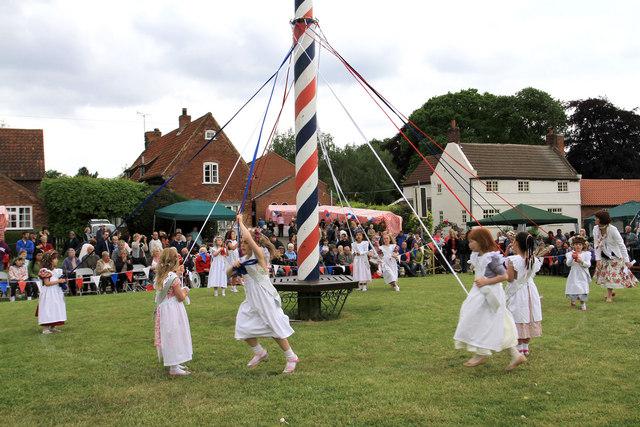Depending on the culture and place you’re looking at, Imbolc is known by a multitude of names. It’s known as Oimelc in Irish Gaelic, which translates to “ewe’s milk.” It heralds the end of winter when the ewes are nursing their newborn lambs. Spring and planting season are almost approaching.
The Romans…
Between the Winter Solstice and the Spring Equinox, the Romans celebrated the Lupercalia season. For them, it was a purifying ceremony done on February 15, in which a goat was slain and its hide was used to make a scourge. Thong-clad men rushed around the city, whacking people with goat skin scraps. Those who were struck considered themselves quite fortunate. This is one of the few Roman festivals that isn’t tied to a specific temple or divinity. Instead, it centres on the creation of Rome by twins Romulus and Remus, who were suckled by a she-wolf in the “Lupercale” cave.
The Egyptians…
At this time of year, the ancient Egyptians observed the Feast of Nut, whose birthday falls on February 2 on the Gregorian calendar. According to the Book of the Dead, Nut was a mother figure to the sun deity Ra, who was known as Khepera at sunrise and assumed the appearance of a scarab beetle. She is usually depicted as a naked woman covered in stars, standing above her husband, Geb, the soil god. Every night, when she comes down to meet him, darkness falls.
The Christianization of a Pagan Holiday
When Ireland converted to Christianity, it was difficult to persuade people to abandon their old gods, so the church let them worship the goddess Brighid as a saint, giving rise to St. Brigid’s Day. Many churches bearing her name can now be seen all throughout the world. St. Brighid of Kildare is one of Ireland’s patron saints, and she is identified with an early Christian nun and abbess, the identity of whom historians debate.
Many Christians still observe Candelmas on February 2nd, which is the feast day for the purification of the Virgin. According to Jewish law, a mother had to be washed forty days after the birth of a son. February 2nd is forty days after Christmas—the birth of Jesus. Candles were blessed, there was plenty of food, and the dismal days of February appeared a little brighter. The highlight of this commemoration in Catholic churches is St. Brigid.
Love…
Because of the huge celebration of Valentine’s Day, February is recognised as the month when love begins anew. In some parts of Europe, February 14th was thought to be the day when birds and animals began their annual search for a mate. Valentine’s Day honours the Christian priest who violated Emperor Claudius II’s order prohibiting young soldiers from marrying. Valentine “tied the knot” in secret for many young couples. He was eventually apprehended and executed on February 14, 269 C.E. He conveyed a note to a girl he had befriended while imprisoned before his death—the first Valentine’s Day card.
The Goddess Brighid
Imbolc, like many Pagan holidays, has a Celtic link; however, it was not observed in non-Gaelic Celtic communities. Brighid, the Irish goddess, is the keeper of the sacred flame and the protector of home and hearth. Purification and cleaning are fantastic ways to prepare for the arrival of spring in her honour. She is also a goddess of inspiration and creativity, in addition to fire.
Brighid is a Celtic “triune” goddess, which means she is both one and three at the same time. Brighid, or Brid, whose name means “bright one,” was honoured at a purification ceremony by the early Celts. Brighid was seen as a crone, or Cailleach Bheur in some regions of the Scottish Highlands, a lady with mystical powers who was older than the earth itself. Brighid’s sister, Brigantia, was a warlike person in the Brigantes tribe near Yorkshire, England. St. Brigid, a Christian, was the daughter of a Pictish slave who was baptised by St. Patrick and founded a nunnery in Kildare, Ireland.
Brighid is regarded as a component of the maiden/mother/crone cycle in modern Paganism. On the eve of her day, she traverses the ground, and before going to bed, each member of the household should put an item of clothing outside for Brighid to bless. As the final thing you do that night, moor your fire and rake the ashes smooth. When you wake up in the morning, look for a mark on the ashes, an indication that Brighid went through that way during the night or early in the morning. The clothing is carried inside, and owing to Brighid, it now has healing and protective qualities.





